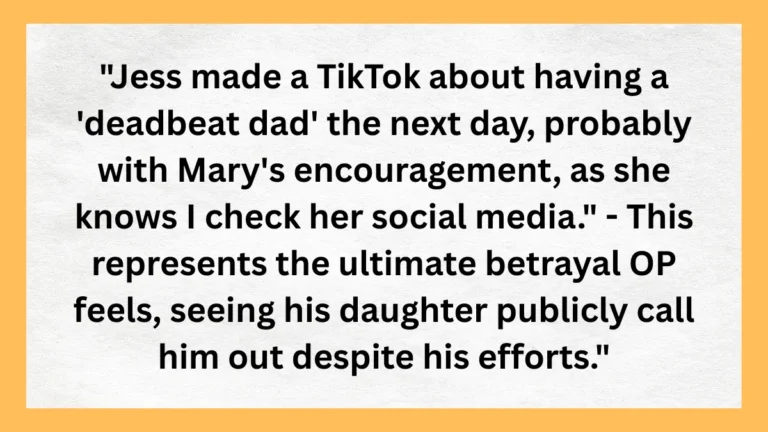I Quit a Toxic Job. Years Later, That Same Company Joined My Team
his career saga could easily be the script of a modern legend. Once trapped within the suffocating walls of a toxic company—where leadership treated employees like disposable commodities—the narrator endured a culture of relentless demands and blatant disrespect. Salvation arrived when a dream job offer landed in their lap, doubling their salary and offering a chance to escape. Tendering a two-week notice should have been simple. Instead, management twisted the moment, requesting secrecy, coercing them to stay longer, and even threatening preemptive termination fueled by envy over their new, higher paycheck.
Years rolled by. Life, as it often does, came full circle. Now, a seasoned leader flourishing at their dream company, the narrator learns that their former employer—the very emblem of dysfunction—has been absorbed into their current organization. A collision of past and present looms. Former colleagues, still steeped in a toxic culture, may soon infiltrate the sanctuary the narrator helped build. Interest clashes with trepidation: How will these old dynamics reignite? Will hard-won progress be at risk?
Some companies, it seems, never learn how to value their people.

A woman once endured cruelty from her bosses for an entire year before finally escaping.
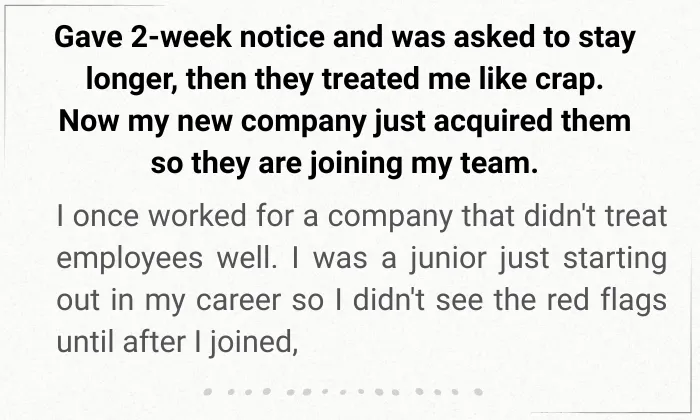
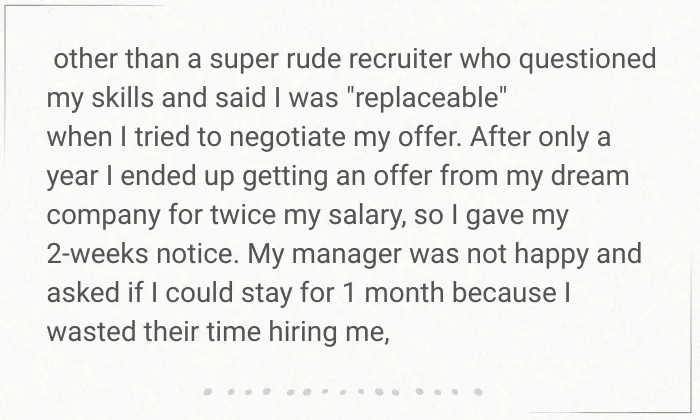
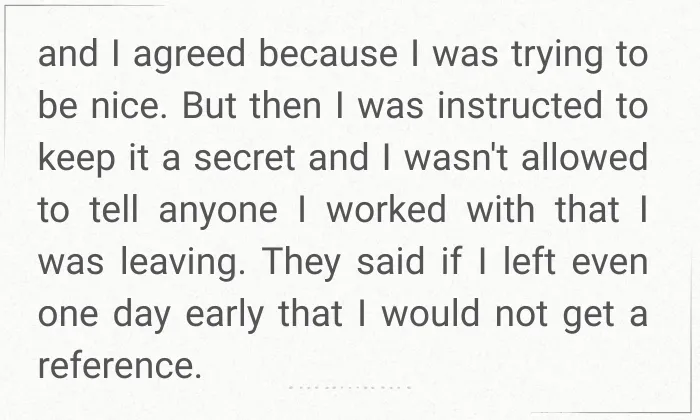
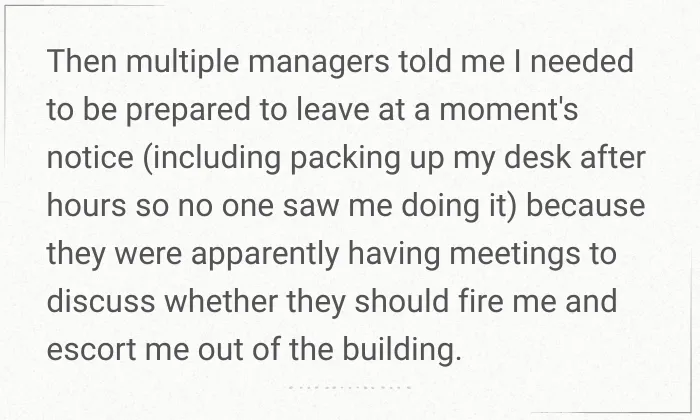
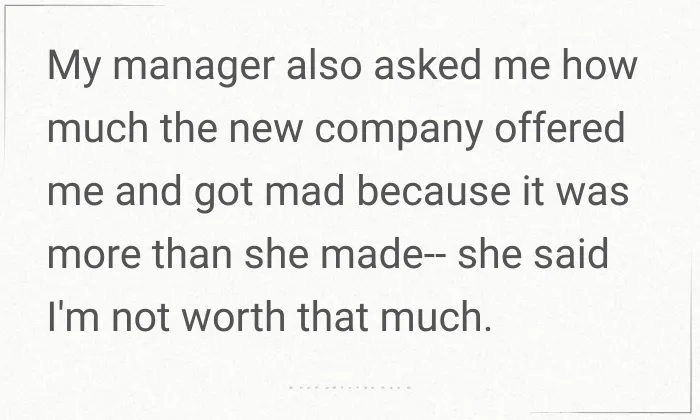
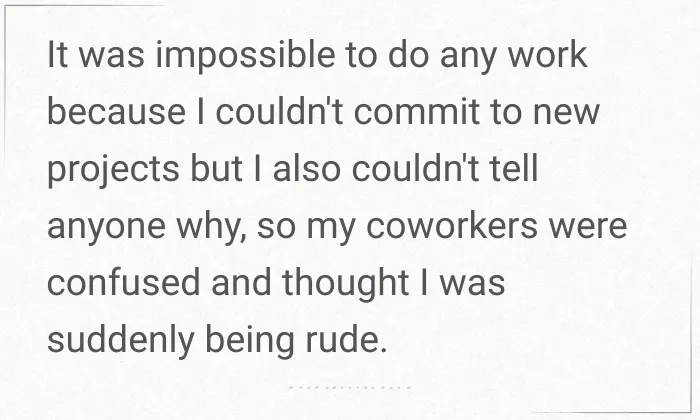
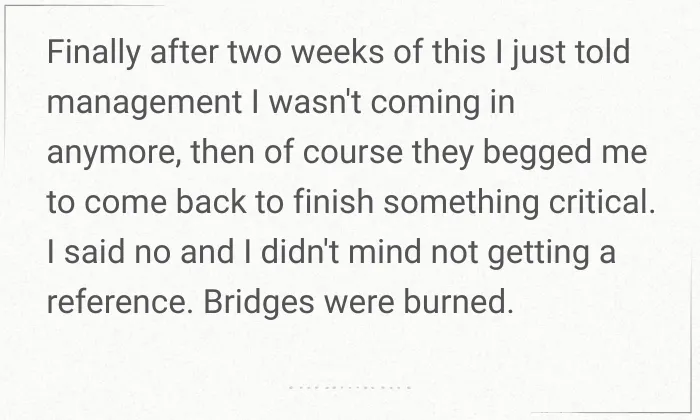
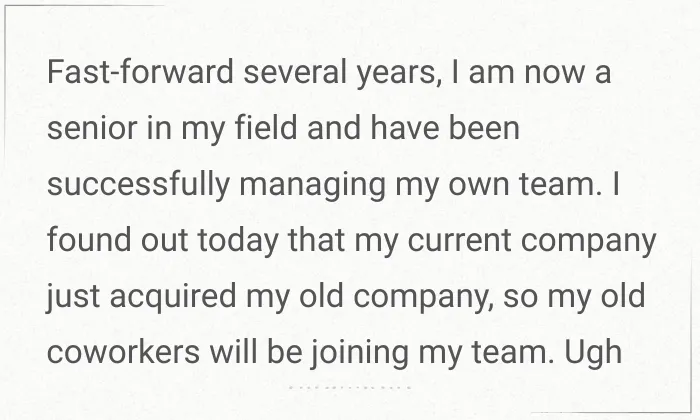
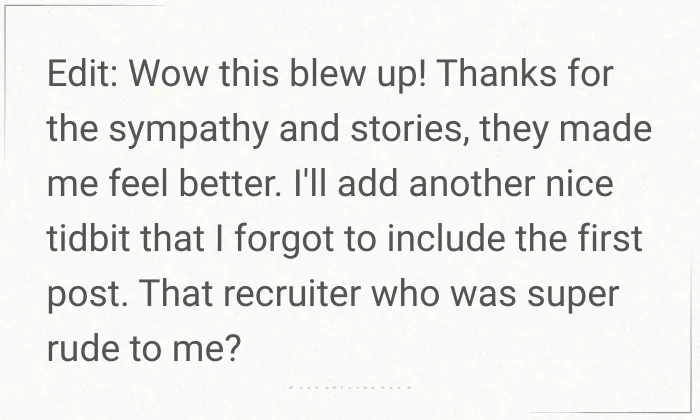

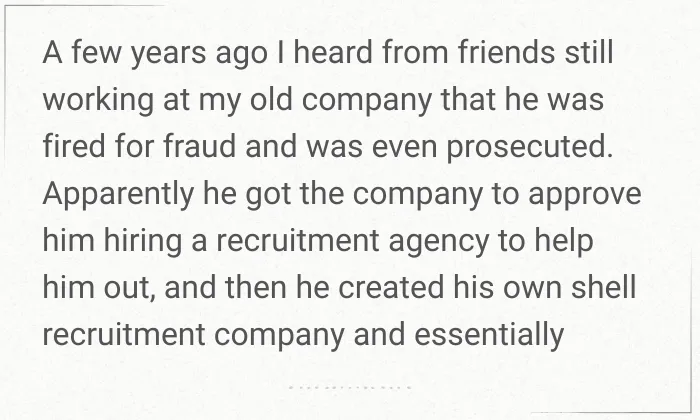

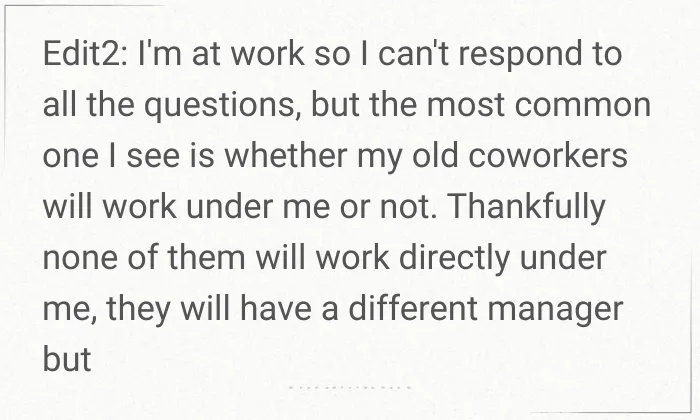
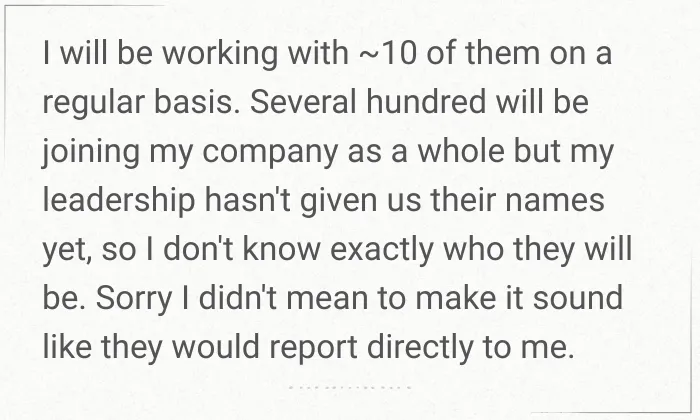
When the Ghosts of a Toxic Workplace Resurface After an Acquisition
This story serves as a reminder: toxicity in the workplace rarely stays buried. It has a way of creeping back, especially in moments of corporate transition. Today, we explore how acquisitions can reshape professional landscapes and how to navigate them with both wisdom and resilience.
Workplace Acquisitions: The Good, The Bad, and The Absolutely Ugly
Acquisitions aren’t just transactions of assets—they’re inheritances of culture, relationships, and deep-seated baggage.
One of the most daunting challenges? Cultural integration. When a thriving, healthy team merges with a battered, toxic one, the clash often results in chaos. Toxicity isn’t easily neutralized; it resists change, festers, and spreads if not properly addressed.
Imagine combining a flourishing garden with an overgrown, weed-infested plot: without meticulous care, the rot can overtake the bloom.

In this particular case, the narrator is caught between triumph and tension. Managing former coworkers could stir up old wounds, reignite unresolved drama, or even erode hard-earned team harmony.
The Lingering Trauma of a Toxic Workplace
No matter how high we climb, scars from toxic environments don’t vanish—they embed themselves deep within. According to Psychology Today, encountering familiar faces from toxic chapters can provoke anxiety, bitterness, or even a resurgence of imposter syndrome.
Thus, professionals must armor themselves with intentional strategies: Redirect, realign, reinforce boundaries. Conversations must pivot towards goals, away from emotional landmines. If conflicts surface, defuse them swiftly, with diplomacy and an eye on collective objectives. Otherwise, the workplace risks becoming a battlefield cloaked in professional decorum but roiling with old resentments.
This situation, challenging though it is, offers the narrator an extraordinary chance: to model leadership, to embody growth, and to steer the culture in a new direction. It’s an opportunity to lead not from fear, but from seasoned strength.
Strategies for Thriving Post-Acquisition
Set Unbreakable Boundaries:
Reuniting with old coworkers doesn’t mean reverting to old dynamics. The key lies in establishing clear, professional-only interactions. Personal grievances, backstories, and nostalgia have no place unless they serve the present moment.
Focus on Cultural Integration
Acquisitions, much like marriages, require delicate negotiation and blending. Leaders must champion transparency, foster open communication, and implement structured cultural onboarding to ensure that destructive patterns aren’t smuggled into the new environment.
Here, the narrator’s role as a protector of team culture becomes paramount.
Leverage Personal Growth
Past connections carry emotional weight, but authority and self-assurance redefine the narrative. By leaning into expertise rather than old memories, interactions can be conducted with poise and assertiveness.
Turning the Tables: Reclaiming Power and Legacy
The irony is as sharp as a blade: the company that once belittled, bullied, and bruised the narrator now stands absorbed into their new domain—where the narrator is thriving at the helm.
It’s not merely revenge served cold; it’s growth served blazing hot.
The merger isn’t just a blending of companies—it’s a testament to resilience. It’s the narrator’s chance to lead with empathy, to eclipse past mistreatment with shining professionalism, and to show those who once doubted them the full force of their evolution.
Success, it turns out, is the best rebuttal of all.



